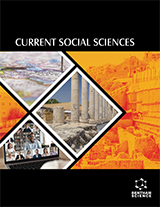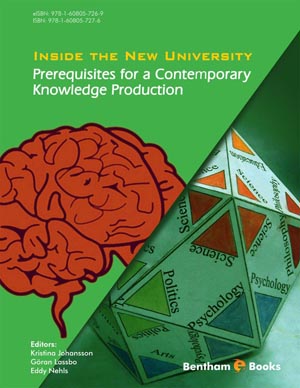Preface
Page: i-i (1)
Author: Abdul-Mumin Khalid* and Obeng Owusu-Boateng*
DOI: 10.2174/9789815238785124010001
PDF Price: $15
Introduction to Digital Transformation in the Education Sector
Page: 1-15 (15)
Author: Abdul-Mumin Khalid* and Obeng Owusu-Boateng*
DOI: 10.2174/9789815238785124010002
PDF Price: $15
Abstract
The social behaviors of humans have been profoundly impacted by recent
developments in hardware and software technologies, from education to health,
transport, manufacturing and trade. By transferring physical education into digital
formats, COVID-19's effects on education have significantly accelerated digital
evolution in Ghana and around the world. Education received a lot of attention during
the Industrial Revolution of the twenty-first century. However, a few of the difficulties
in getting data from the source to the end consumers are the expense of the
infrastructure, problems with network connectivity, and digital platforms. Another
criterion for assessing the progress of digitization and its effects on developing and
developed nations is the economic variety of the populace. Personalized learning,
academic advising, data collecting, management, and other areas are all heavily reliant
on digital transformation, which highlights a trend.
Digital Transformation in the Education Sector: Benefits and Challenges
Page: 16-45 (30)
Author: Abdul-Mumin Khalid* and Obeng Owusu-Boateng*
DOI: 10.2174/9789815238785124010003
PDF Price: $15
Abstract
Students, staff members, and other stakeholders’ demands are all shifting
rapidly due to advances in electronic technology as well as information analytics. Many
of the executives of today are neither tech-savvy nor digital natives, yet they
nonetheless recognize the importance of technology in maintaining a competitive edge
and fuelling expansion. The study identified many benefits, including facilitating
learning and boosting classroom efficiency, facilitating the monitoring of student
achievement and growth in the classroom, helping students and teachers work together
better, providing unique educational opportunities, increasing efficiency in the
classroom and monitoring academic progress. The chapter also identified the following
challenges of using DT in the education sector: ineffective digital fixes, uneven
availability, developing bad study routines, possible inaccuracies and inability to
express oneself. The DT revolution may present some difficulties for institutions, but it
is ultimately beneficial to the industry as a whole. It can play a huge role in inspiring
both students and educators to adopt cutting-edge methods and outlooks.
Factors for Adopting Technology in the Education Sector
Page: 46-58 (13)
Author: Abdul-Mumin Khalid* and Obeng Owusu-Boateng*
DOI: 10.2174/9789815238785124010004
PDF Price: $15
Abstract
Information communication and technology (ICT) is a key driver in most
industries including education. The goal of this chapter is to look at the major factors
that drive the adoption of digital tools in the education sector. Such factors include the
role of educator/professor/lecturer, context factors, governmental actions, university
factors, organizational culture and leadership, skills in information and communication
technology, obtainability of resources, involved parties, value and developments,
advances in technology, superiority of information, data science and business
intelligence, and compatibility. Teachers and mentors should push their pupils to use
ICT for research, communication, and problem-solving to boost their academic
performance and opportunities. Both the availability of tools and the quality of those
tools affect students' perspectives and intentions to engage in digital learning. ICTbased digital learning choices should be utilized by students. While some see ICT as a
way to boost classroom efficiency, teamwork, the quality of instruction, and student
outcomes, the reality is that its usage in schools has been widespread for only a short
period and that many people are either uninterested or actively opposed to it.
The Adoption of E-Learning in the Education Sector
Page: 59-74 (16)
Author: Abdul-Mumin Khalid* and Obeng Owusu-Boateng*
DOI: 10.2174/9789815238785124010005
PDF Price: $15
Abstract
Technology has recently become a major component of the educational field
and learning process as it provides students with opportunities to learn more effectively
and operate efficiently in this age of technological advances. The study has identified
the factors among students that can enable or inhibit students from using online
learning platforms. Based on the theoretical foundation, the factors influencing elearning are environmental, organizational, technological (smart-device use), subjective
norms, self-efficacy, accessibility and flexibility. User adoption of e-learning is greatly
influenced by the strength and dependability of the underlying information technology
infrastructure. The present state of e-learning in universities and the results of previous
studies on the topic are also described.
The Adoption of Artificial Intelligence in the Education Sector
Page: 75-86 (12)
Author: Abdul-Mumin Khalid* and Obeng Owusu-Boateng*
DOI: 10.2174/9789815238785124010006
PDF Price: $15
Abstract
The objective of this chapter is to elucidate the integration of artificial
intelligence (AI) within the education sector while also examining the advantages of AI
in education based on existing scholarly literature. Artificial intelligence (AI) addresses
various contemporary difficulties in the field of education, including bridging the
technological divide between learners and educators, ensuring trustworthy and ethical
learning systems, facilitating distance learning, and advancing the development of
high-quality data as well as solutions for the current educational process. The potential
implications of artificial intelligence (AI) in the field of education are vast, as this
technology has the capability to effectively address various challenges within the
online education system.
The Adoption of Big Data in the Education Sector
Page: 87-112 (26)
Author: Abdul-Mumin Khalid* and Obeng Owusu-Boateng*
DOI: 10.2174/9789815238785124010007
PDF Price: $15
Abstract
Big Data enables higher educational institutions the ability to efficiently use
information technology resources to enhance the effectiveness of education and
performance. This chapter explores the meaning of big data applicable to educational
institutions, identifies the factors that affect the adoption of big data approach in higher
education institutions, especially for strategic management purposes and aims to
examine the challenges of adopting big data in higher education institutions. The
literature sources are from journals on scientific studies and articles, and research
papers. The benefits of BD in the education sector include academic productivity,
teaching efficiency, organization of processes, freedom of tech stack/tech stack
independence, reduction in student dropout, managing the business's finances and
operations, maintaining open and honest communication, multiplication of data,
accelerating the instructional process and personalization. The driving factors are the
TEO framework (organizational, technological and environmental), etc
The Adoption of the Internet of Things (IoT) in the Education Sector
Page: 113-131 (19)
Author: Abdul-Mumin Khalid* and Obeng Owusu-Boateng*
DOI: 10.2174/9789815238785124010008
PDF Price: $15
Abstract
The Internet of Things (IoT) is causing a sea change in the educational
system. IoTs are revolutionizing the classroom by making lessons more interactive and
interesting for both teachers and students. An understanding of why IoT is becoming a
vital component of daily instruction and learning is gained in this chapter, along with a
discussion of the challenges and relevance of the technology in question. According to
the study's findings, students can work together in real-time thanks to IoT devices.
Smart whiteboards, for instance, enable collaborative brainstorming, note-taking, and
writing amongst a group of people. Moreover, VR programs can imitate real-world
circumstances, providing pupils with a more comprehensive education. Teachers can
tailor their lessons to each student's individual needs with the aid of IoT devices.
Teachers can make a greater impact on student's academic performance and
engagement if they take into account how their students learn best. There are various
ways in which humankind will profit from IoT development, but these gains will not be
free. Some of the biggest drawbacks of the Internet of Things are security concerns,
technological dependency, and employment insecurity. Governments throughout the
world are investing time and energy to find solutions to these challenges and unlock the
full potential of the IoTs. The capacity to employ Internet of Things technologies to
create an interesting, dynamic learning environment is crucial for the future of
education. Incorporating Internet of Things (IoT) devices into the classroom allows
teachers to provide a more individualized, collaborative learning environment that
boosts student engagement and achievement.
Subject Index
Page: 132-136 (5)
Author: Abdul-Mumin Khalid* and Obeng Owusu-Boateng*
DOI: 10.2174/9789815238785124010009
PDF Price: $15
Introduction
Navigating through Technology in Modern Education explores the transformative impact of digital innovation in education. From introducing digital transformation to discussing the benefits and challenges, this book covers crucial topics like e-learning, artificial intelligence, big data, and the Internet of Things in education. With insights into factors for adopting technology and tailored learning experiences, this book equips readers with the knowledge to navigate the evolving landscape of modern education. Whether you're a seasoned educator or a newcomer, this book offers valuable insights into leveraging technology for enhanced learning experiences.














